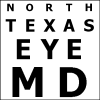Diplopia
Diplopia is double vision caused by a problem with the muscles that control the eye or the nerves that stimulate those muscles. Since it is caused by mis-alignment of the eyes, true double vision goes away when one eye is covered. Monocular diplopia, double-vision present when looking through only one eye, is usually related to refractive error (focusing problem).
Many conditions can cause diplopia. Double vision is usually a symptom of strabismus (misalignment of the eyes), due to the improper movement of one or more eye muscles. Strabismus is most often found in children, but it can develop later in life. A growth in the eyelid pressing on the front of the eyeball can also cause temporary double vision. Rarely, double vision arises because of an abnormality within the eye, such as a dislocation of the eye’s natural lens.
The onset of double vision in adulthood should be brought to the attention of your ophthalmologist (Eye M.D) immediately to exclude the possibility of a thyroid disease, tumor, aneurysm, or neurological problem. Two of the primary neurological conditions that could cause diplopia are microvascular cranial nerve palsy (MCNP) and myasthenia gravis (MG).
Microvascular cranial nerve palsy, or “diabetic palsy,” is one of the most common causes of double vision in older people. It occurs more often in patients with diabetes and high blood pressure, when blood flow is blocked to one or more of the six eye muscles that control eye movement. Although there is no known treatment for MCNP, the double vision may be treated by patching either eye. If the double vision persists, prism eyeglasses or eye muscle surgery may be prescribed.
Myasthenia gravis is a disorder characterized by muscle weakness, caused by a communication breakdown between the nerves and the muscles due to an autoimmune condition. It is most common in the muscles of the face, eyes, arms, and legs, and in the muscles used for chewing, swallowing, and talking. Double vision is one of the common indicators of myasthenia gravis. Though there is no known cure for myasthenia gravis, there are a number of treatment options to manage the condition, including medication, surgery, and other procedures. If you have MG, physical therapy can help, and you can learn specific coping skills for improving your daily life. Early detection and treatment of MG is crucial to managing the condition and preventing serious problems with breathing or swallowing, which require emergency care.
